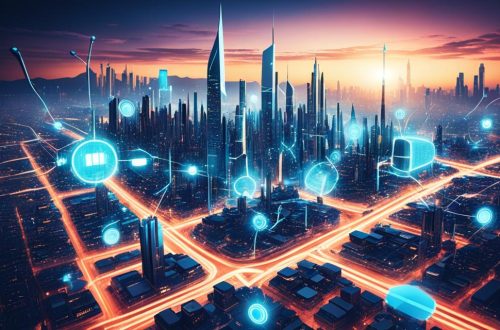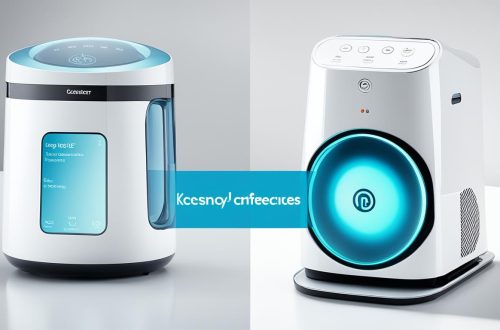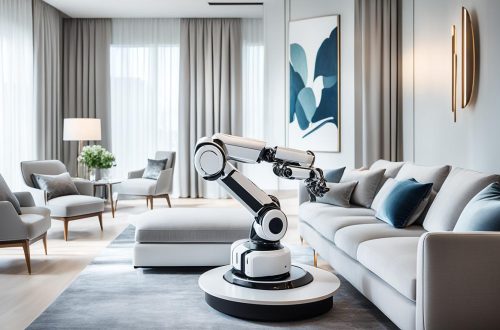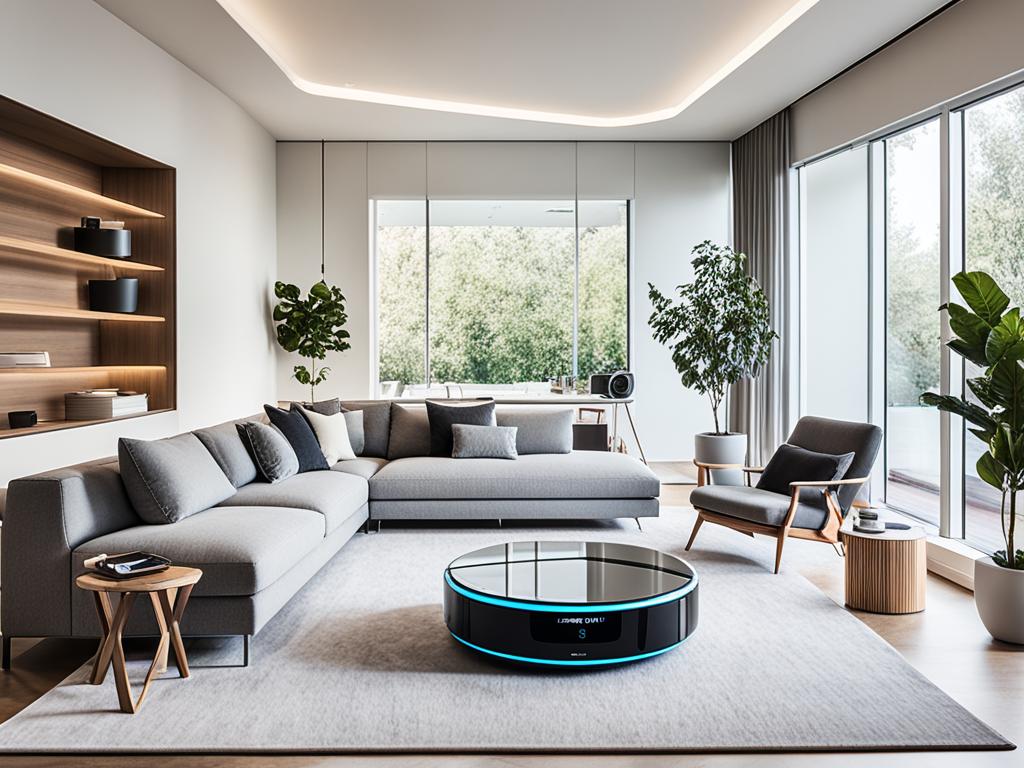
Elevating the Art of Smart: The Role of IoT in Crafting Luxurious Experiences
Welcome to my blog post on the transformative power of the Internet of Things (IoT). In today’s fast-paced world, technology plays a vital role in enhancing our everyday experiences, and IoT is at the forefront of this revolution. From smart devices to connected platforms, IoT has created a seamless ecosystem that elevates our daily routines and brings a touch of luxury to our lives.
IoT technology has permeated various sectors, including home automation, healthcare, and hospitality, reshaping the way we live, work, and play. By connecting devices and enabling intelligent data exchange, IoT empowers us to control our surroundings with unprecedented convenience and efficiency. From adjusting our home’s temperature before we arrive to monitoring our health in real-time, IoT enriches our lives in ways we never imagined possible.
In this blog post, I will delve into the myriad applications and benefits of IoT, exploring how it transforms the ordinary into extraordinary. I will discuss the rise of smart homes, the impact of IoT on our daily routines, and the seamless experiences it enables in the hospitality industry. Additionally, I will explore the symbiotic relationship between IoT and smart devices, the role of artificial intelligence in advancing IoT solutions, and the challenges and best practices for ensuring the security of our connected world.
So, join me on this journey into the world of IoT as we uncover the incredible possibilities and luxurious experiences it brings. Let’s explore the cutting-edge technologies, the game-changing innovations, and the future trends that will shape the way we live and interact with the world around us.
Key Takeaways:
- The Internet of Things (IoT) transforms everyday life with its seamless automation and luxurious experiences.
- Smart homes and connected devices revolutionize our daily routines, making them more convenient and personalized.
- In the hospitality industry, smart devices enhance guest experiences, providing personalized and immersive stays.
- IoT serves as the building blocks of a connected ecosystem, redefining the concept of modern luxury.
- IoT innovation elevates healthcare with remote patient monitoring, real-time data collection, and personalized solutions.
Transforming Everyday Living with IoT
The rise of smart homes and seamless automation has revolutionized the way we live, enhancing convenience and transforming our daily routines. With the integration of smart devices and IoT technology, we now have the ability to control and automate various aspects of our homes with ease and efficiency. Whether it’s adjusting the lighting, setting the perfect temperature, or enhancing security, IoT has made our lives more convenient and comfortable.
The Rise of Smart Homes and Seamless Automation
Smart homes have become increasingly popular as more individuals recognize the potential of IoT technology in elevating their living spaces. By connecting devices and systems, such as thermostats, door locks, and security cameras, smart homes provide seamless automation and control. Through the use of centralized IoT platforms, smart home owners can easily manage and monitor their devices, creating personalized experiences that cater to their specific needs.
Imagine arriving home after a long day and being welcomed by your smart home system, which automatically adjusts the lighting, temperature, and even plays your favorite music. With the convenience and comfort that smart homes offer, it’s no wonder that they have become an integral part of modern living.
From Convenience to Necessity: IoT’s Impact on Daily Routines
What was once considered a luxury has now become a necessity in our daily lives. IoT technology has seamlessly integrated into our routines, simplifying tasks and enhancing efficiency. For example, smart energy management systems can automatically adjust energy usage based on occupancy, optimizing energy consumption and reducing utility costs.
Furthermore, IoT-enabled home security systems provide peace of mind by allowing homeowners to monitor their properties remotely and receive instant alerts in case of any suspicious activities. This level of convenience and security is now a fundamental part of our daily lives.
By embracing IoT-enabled devices, we can transform our homes into intelligent environments that not only adapt to our needs but also enhance the overall quality of our everyday experiences. From energy efficiency to personalized settings, smart homes have become an essential component of modern living.
| Benefits of Smart Homes and Seamless Automation |
|---|
| Increased convenience and comfort |
| Enhanced energy efficiency |
| Improved security and safety |
| Customized and personalized experiences |
Revolutionizing Hospitality: Smart Devices Enhancing Guest Experiences
In the ever-evolving landscape of the hospitality industry, smart devices are playing a pivotal role in enhancing guest experiences. As hotels embrace the Internet of Things (IoT) technology, they are able to provide personalized and immersive stays that cater to the unique preferences of each guest.
One of the key areas where smart devices are making a significant impact is in streamlining the check-in and check-out processes. Gone are the days of long queues at the reception desk. With the integration of smart devices, guests can now enjoy seamless self-service check-in and check-out experiences, minimizing wait times and maximizing convenience.
Smart devices also enable hotels to create personalized room settings for each guest, ensuring that their stay is tailored to their preferences. From adjusting the temperature and lighting to setting up personalized entertainment options, smart devices offer a level of customization that adds an extra touch of luxury to the guest experience.
Additionally, smart devices allow hotels to offer customized amenities based on the guest’s preferences and needs. Whether it’s automatically replenishing toiletries or providing personalized recommendations for nearby attractions and restaurants, these devices enhance the guest’s overall experience by anticipating their needs and desires.
Moreover, smart devices contribute to localized experiences by providing guests with real-time information about local events, weather updates, and points of interest. With the help of these devices, guests can easily explore the surrounding area and make the most of their stay, immersing themselves in the local culture and attractions.

One of the most innovative in-room technologies that is revolutionizing the guest experience is voice-activated assistants. These devices enable guests to control various aspects of their room, such as the temperature, lighting, and entertainment, using simple voice commands. This hands-free and intuitive interaction with the in-room environment adds a new level of convenience and sophistication.
In-room entertainment has also been transformed by smart devices, particularly with the advent of TV casting. Guests can now seamlessly stream their favorite content from their personal devices to the in-room TV, allowing for a more immersive and personalized entertainment experience.
In conclusion, smart devices are redefining the hospitality industry, elevating guest experiences to new heights. From seamless check-in and check-out processes to personalized room settings, customized amenities, and localized experiences, these devices offer hotels the opportunity to create unforgettable stays. With innovative technologies like voice-activated assistants and TV casting, smart devices are paving the way for a future where every guest feels truly at home.
Internet of Things (IoT) and Smart Devices: A Partnership Defining Modern Luxury
This section explores the partnership between the Internet of Things (IoT) and smart devices that is revolutionizing the concept of modern luxury. As IoT becomes increasingly prevalent in our lives, it serves as the foundation for a connected ecosystem that seamlessly integrates various devices and technologies.
Building Blocks of a Connected Ecosystem
The connected ecosystem facilitated by IoT enables devices to communicate and interact with each other, creating a seamless and intelligent network. From smart homes to wearable devices, IoT forms the backbone that allows these devices to function in harmony. By connecting everyday objects and systems, IoT enhances convenience, efficiency, and personalized experiences.
How IoT Evolves the Definition of Sophistication
The evolution of IoT has redefined sophistication, transforming ordinary objects into smart devices with advanced features and functionalities. From voice-activated assistants to connected appliances, IoT seamlessly blends cutting-edge technology with everyday objects, elevating their capabilities and raising the bar for modern luxury. The integration of IoT technology in various aspects of our lives adds a touch of elegance and sophistication to our daily routines.
The partnership between IoT and smart devices is at the forefront of defining modern luxury, offering a seamlessly connected ecosystem and redefining the very meaning of sophistication.
Elevating Healthcare Through IoT Innovation
The healthcare industry has undergone a significant transformation in recent years, thanks to the innovative integration of the Internet of Things (IoT). This technological revolution has introduced new possibilities and elevated the quality of patient care. By leveraging IoT devices and technology, healthcare systems can now enable remote patient monitoring, real-time data collection, and personalized healthcare solutions.
One of the key advantages of IoT in healthcare is the ability to remotely monitor patients. IoT devices, such as wearable trackers and connected medical devices, can provide continuous patient data that healthcare providers can analyze and evaluate in real-time. This allows for proactive interventions, timely medical attention, and improved patient outcomes.
IoT innovation in healthcare also enhances efficiency and reduces healthcare costs. With IoT-enabled devices, healthcare professionals can automate routine tasks, streamline workflows, and optimize resource allocation. This results in improved operational efficiency, reduced errors, and cost savings.
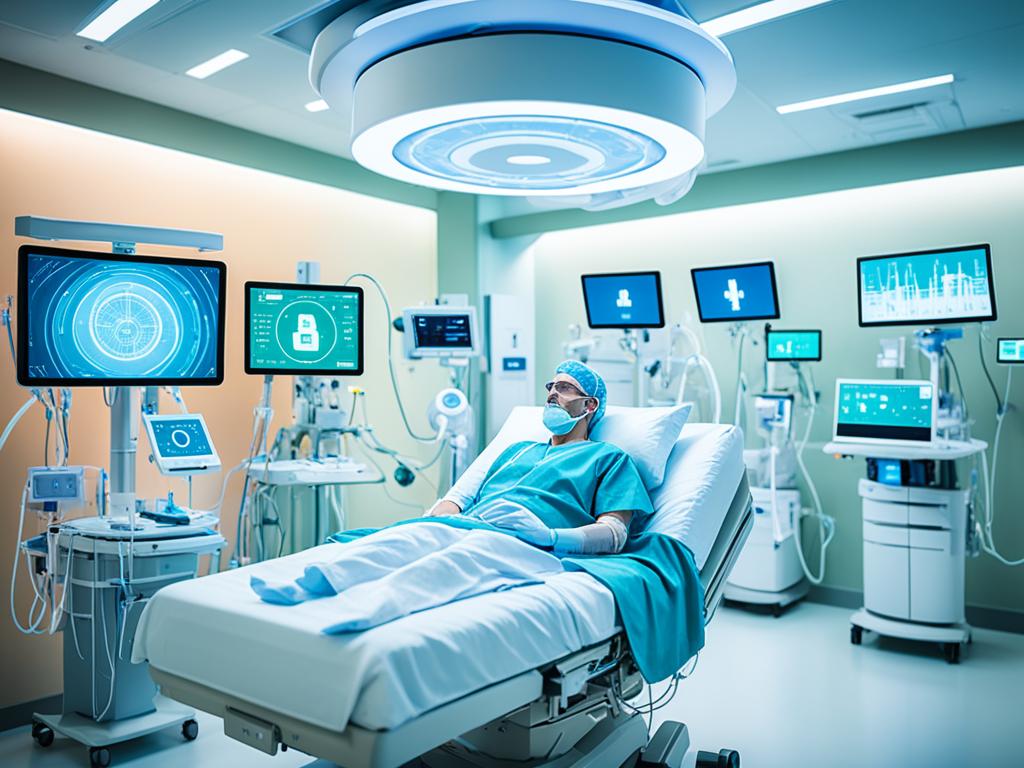
Moreover, the personalized healthcare solutions made possible by IoT technology benefit both patients and healthcare providers. IoT devices allow for the collection of individual health data, enabling tailored treatment plans and interventions. Patients can have access to personalized health recommendations, remote consultations, and self-management tools, empowering them to take control of their well-being.
Examples of IoT applications in healthcare include wearable devices that monitor vital signs and send real-time alerts to healthcare providers, smart medical devices that automate medication management and dosage tracking, and telemedicine platforms that enable remote consultations and diagnostics.
The integration of IoT innovation in healthcare has the potential to revolutionize the industry, improving patient care, enhancing efficiency, and reducing costs. As IoT technology continues to advance, we can expect even greater advancements in healthcare delivery, disease management, and patient experience.
The Symbiotic Relationship Between Python and IoT Devices
Python programming language and IoT devices share a symbiotic relationship that has revolutionized the way we interact with smart technology. Python’s simplicity, versatility, and extensive library support have made it the language of choice for IoT development. Let’s explore why Python is becoming increasingly popular in the IoT landscape and how it is powering the implementation of innovative IoT solutions.
Why Python is Becoming the Language of IoT
Python’s popularity in the IoT domain can be attributed to several key factors. First and foremost, Python’s readability and ease of use make it an ideal programming language for beginners and experienced developers alike. Its straightforward syntax and clean code structure enable faster development cycles and easier troubleshooting.
Furthermore, Python’s versatility allows developers to work with a wide range of IoT devices and platforms. It supports different operating systems, making it compatible with diverse hardware configurations. Python also provides extensive library support, offering pre-built modules for various IoT functionalities such as data handling, networking, and sensor integration. This rich library ecosystem empowers developers to quickly build and deploy IoT applications without reinventing the wheel.
Python’s scalability is another crucial advantage for IoT projects. With its ability to handle complex processes and manage large amounts of data, Python can accommodate the demands of IoT systems that require robust data processing and analytics capabilities. Additionally, its compatibility with cloud services and platforms allows seamless integration with IoT ecosystems, unlocking the full potential of connected devices and data-driven insights.
Case Studies: Python in Action with IoT
Real-world case studies demonstrate the effectiveness of Python in implementing IoT solutions across diverse industries. Let’s explore some noteworthy examples:
“Fleet Management Optimization”
Python’s versatility and computational power have been instrumental in optimizing fleet management systems. By collecting and analyzing data from IoT devices installed in vehicles, Python-based algorithms can optimize routing, fuel consumption, and maintenance scheduling, resulting in cost savings and increased operational efficiency.
“Smart Agriculture”
In the agricultural sector, Python is playing a vital role in IoT-enabled smart farming solutions. By integrating IoT sensors and Python-based analytics, farmers can monitor environmental variables, automate irrigation schedules, and make data-driven decisions to optimize crop yield and resource utilization.
“Industrial Automation”
Python’s ease of use and robustness make it an excellent choice for industrial automation applications. By leveraging Python’s capabilities, industries can implement IoT-based control systems that monitor and manage complex manufacturing processes, enhancing efficiency, quality, and worker safety.
“Smart Energy Management”
Python is also at the forefront of smart energy management solutions. By combining IoT devices and Python analytics, energy consumption patterns can be analyzed in real-time, allowing users to optimize energy usage, identify inefficiencies, and reduce costs.
These case studies exemplify Python’s effectiveness in implementing IoT solutions and its ability to drive transformative outcomes across industries.
In conclusion, Python has emerged as the language of choice for IoT development due to its simplicity, versatility, and extensive library support. Its scalability, compatibility, and widespread adoption across industries make it the go-to language for implementing IoT solutions. As Python continues to evolve and innovate, it will further enable the seamless integration of IoT devices and the creation of sophisticated IoT ecosystems.
Connectivity and Interoperability in the IoT Arena
The Internet of Things (IoT) has revolutionized the way devices and platforms communicate and collaborate. In this section, I will explore the importance of connectivity and interoperability in the IoT arena, and how data exchange standards play a crucial role in enabling seamless experiences across devices.
The Role of Data Exchange Standards
In order for IoT devices and platforms to seamlessly interact with each other, data exchange standards are essential. These standards define the protocols and interfaces that enable devices to communicate effectively, regardless of their manufacturers or individual specifications.
The establishment of data exchange standards ensures that devices from different brands can exchange data and work together harmoniously. This interoperability allows users to connect multiple IoT devices without compatibility issues or the need for complex configurations.
“Data exchange standards serve as the common language that enables different IoT devices to understand and exchange information effectively.”
One example of a widely used data exchange standard in IoT is MQTT (Message Queuing Telemetry Transport), which is designed for lightweight communications between IoT devices and platforms. MQTT ensures efficient data transmission with minimal bandwidth and power consumption, making it ideal for resource-constrained IoT environments.
Crafting Seamless Experiences Across Devices
Seamless experiences are the cornerstone of IoT technology. When devices can seamlessly communicate and collaborate, users can enjoy a connected ecosystem that enhances their daily routines and experiences.
Connectivity and interoperability enable IoT devices to work together effortlessly, providing users with a cohesive and integrated experience. For example, smart home devices can seamlessly connect with each other to create automated routines based on users’ preferences. A user’s smart speaker can communicate with their smart lighting system, adjusting the lights to match their desired ambiance when they ask to play music or watch a movie.
This level of connectivity and interoperability extends beyond the home environment. In the healthcare industry, IoT devices such as wearable fitness trackers, remote monitoring systems, and electronic health records can seamlessly exchange data, giving healthcare providers a comprehensive view of a patient’s health status. This enables personalized care and real-time interventions, ultimately improving patient outcomes.
Image
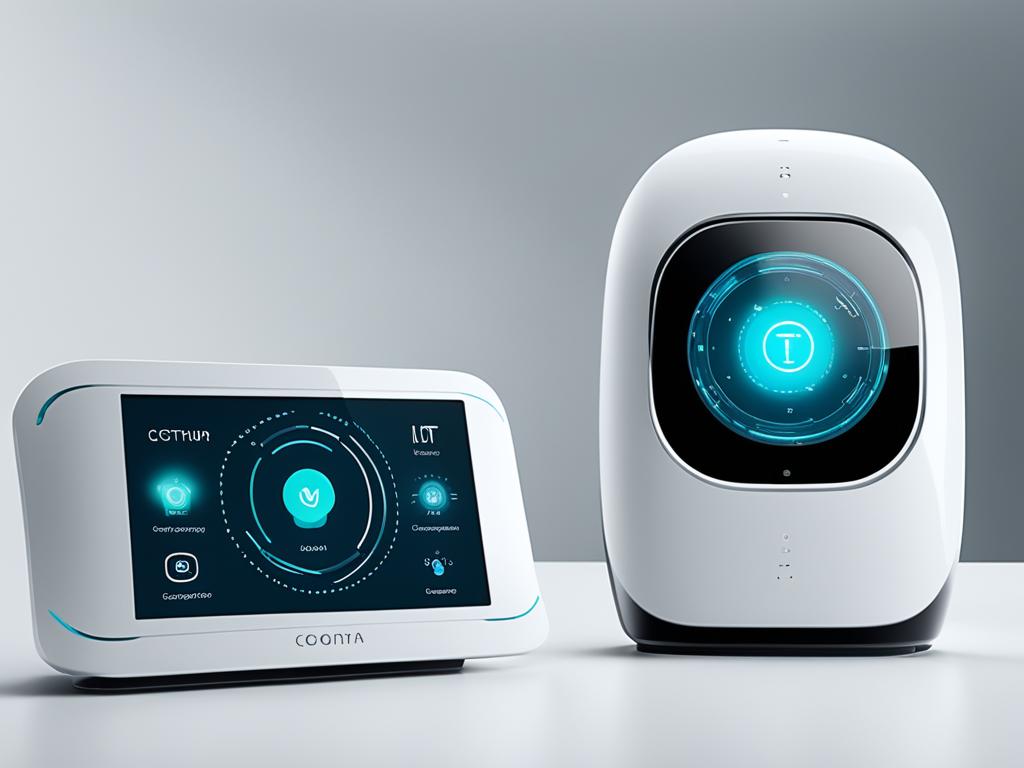
The Future of Connectivity and Interoperability
As the IoT continues to evolve and expand, the need for seamless connectivity and interoperability will only become more crucial. Industry stakeholders are actively working towards developing and implementing standardized protocols and interfaces to enable widespread interoperability and enhance user experiences.
Advancements in technologies such as 5G and edge computing will further improve connectivity and enable faster and more reliable communication between IoT devices. These developments will unlock new possibilities in sectors such as transportation, manufacturing, and smart cities, where devices and systems need to seamlessly work together to optimize operations and improve efficiency.
In conclusion, connectivity and interoperability are essential for the success of the IoT ecosystem. By establishing data exchange standards and enabling seamless experiences across devices, the IoT can continue to transform everyday life and create a truly connected world of endless possibilities.
Enhancing Smart Device Capabilities Through IoT Platforms
IoT platforms play a crucial role in enhancing the capabilities of smart devices, enabling seamless control and integration. These platforms provide a unified interface and management system for multiple IoT devices, allowing users to easily monitor and control their interconnected devices from a single dashboard. By leveraging the power of IoT platforms, users can optimize the functionality of their smart devices and unlock their full potential.
One of the key benefits of using IoT platforms is scalability. These platforms are designed to handle large amounts of data and support a growing number of connected devices. This scalability empowers users to expand their smart device network without experiencing any performance issues. Whether it’s adding new devices or integrating with existing ones, IoT platforms provide the flexibility needed to scale up or down as per the user’s requirements.
Another significant advantage of IoT platforms is interoperability. These platforms enable smart devices from different manufacturers to seamlessly communicate and work together. Through standard protocols and interfaces, IoT platforms ensure that devices from various brands can seamlessly exchange data and cooperate to perform complex tasks. This interoperability fosters a cohesive and integrated smart ecosystem, enabling users to create personalized and tailored experiences with their smart devices.
Data analytics is yet another powerful capability offered by IoT platforms. These platforms collect and analyze data generated by smart devices, providing valuable insights and intelligence. By leveraging advanced analytics algorithms and machine learning techniques, IoT platforms can extract meaningful patterns, trends, and correlations from the collected data. This data-driven approach empowers users to make informed decisions and optimize the performance of their smart devices based on real-time data.
There are several popular IoT platforms available in the market that have revolutionized the way we interact with our smart devices. One such example is the Amazon Web Services (AWS) IoT platform, which provides a comprehensive suite of tools and services for building, deploying, and managing IoT applications. Another notable platform is Google Cloud IoT, which offers a secure and scalable infrastructure for connecting, managing, and analyzing IoT devices and data. These platforms, along with many others, have significantly elevated the capabilities of smart devices and transformed the way we live and interact with technology.
To visualize the enhanced capabilities of smart devices through IoT platforms, take a look at the following image:
The Role of Artificial Intelligence in Advancing IoT Solutions
In the realm of IoT (Internet of Things), artificial intelligence (AI) plays a critical role in driving innovation and transforming the capabilities of connected devices. AI serves as the brain behind smarter IoT devices, enabling them to learn from data, adapt to changing conditions, and make intelligent decisions without human intervention.
AI: The Brain Behind Smarter IoT Devices
The integration of AI into IoT devices has revolutionized their functionalities and capabilities. Powered by AI algorithms, IoT devices can now analyze vast amounts of data in real-time, detecting patterns, predicting outcomes, and autonomously performing complex tasks. This intelligence empowers IoT devices to optimize their performance, conserve resources, and provide personalized user experiences.
One example of AI-powered IoT devices is in the field of predictive maintenance. By combining AI algorithms with sensor data, IoT devices can monitor the condition of equipment, identify potential failures, and proactively schedule maintenance before costly breakdowns occur. This not only increases operational efficiency but also reduces maintenance costs and minimizes downtime.
Transformative AI-Powered IoT Applications
The synergy between AI and IoT has resulted in transformative applications across various industries. One notable application is in autonomous vehicles, where AI algorithms enable cars to perceive their environment, make real-time decisions, and navigate safely. These AI-powered IoT systems can analyze data from various sensors, such as cameras and radar, to identify objects, detect obstacles, and take appropriate actions, enhancing road safety and revolutionizing transportation.
Another transformative application is in smart city systems. AI-powered IoT devices can collect and analyze data from various sources, such as traffic sensors, energy grids, and environmental sensors, to optimize resource allocation, ensure sustainable development, and improve the quality of life for citizens. These intelligent systems enable cities to optimize transportation routes, reduce energy consumption, and enhance public services.
However, the integration of AI into IoT also poses challenges and ethical considerations. Issues such as data privacy, security vulnerabilities, and biased algorithms need to be carefully addressed to ensure the responsible and ethical deployment of AI-powered IoT solutions.

Security: The Keystone of a Trustworthy IoT Environment
In today’s interconnected world, security is a crucial aspect when it comes to creating a trustworthy IoT environment. As the Internet of Things continues to expand and revolutionize various industries, it also introduces unique security challenges and vulnerabilities. It is essential to understand and navigate these challenges to ensure the integrity and confidentiality of IoT devices and data.
Navigating IoT Security Challenges
IoT devices are susceptible to a range of security threats, including unauthorized access, data breaches, and device tampering. The interconnected nature of IoT networks and the vast amount of data they generate make them enticing targets for cybercriminals. It is crucial for organizations and individuals to be aware of these challenges and take proactive measures to mitigate the risks.
“The key to successful IoT security is adopting a multi-layered approach that addresses all stages of the device lifecycle, from design and development to deployment and ongoing management.” – Jane Johnson, cybersecurity expert
One of the main challenges in IoT security is the sheer volume of devices and the diversity of their applications. IoT networks encompass a wide range of devices, from smart home appliances to industrial sensors, each with its unique security considerations. Organizations must implement comprehensive security protocols that account for the characteristics and requirements of each device and application.
Another significant challenge is the complexity of IoT systems. With numerous devices, sensors, and networks interconnected, managing and securing the entire IoT ecosystem can be daunting. It is essential to establish secure communication protocols, strong authentication mechanisms, and robust encryption algorithms to protect data transmission and ensure the confidentiality of sensitive information.
Best Practices for Securing Smart Devices and Data
Adhering to best practices is critical for ensuring the security of smart devices and data within an IoT environment. By implementing these practices, organizations and individuals can strengthen their defense against potential security threats:
- Implement strong authentication mechanisms: Utilize secure authentication methods, such as two-factor authentication, to validate device and user identity.
- Enforce robust encryption: Encrypt data both at rest and in transit to prevent unauthorized access and protect sensitive information.
- Regularly update and patch devices: Keep devices up to date with the latest security patches and firmware updates to address known vulnerabilities.
- Secure network connections: Utilize secure and encrypted network connections, such as virtual private networks (VPNs) or Transport Layer Security (TLS), to protect data transmission and prevent eavesdropping.
- Implement access controls: Limit and manage access to IoT devices and networks through stringent access control policies and privilege management.
- Monitor and analyze network traffic: Employ network monitoring tools to detect and respond to suspicious activities or anomalies within the IoT ecosystem.
- Educate users and employees: Raise awareness about IoT security risks and best practices among users and employees to foster a culture of security.
It is crucial to note that IoT security is not a one-time effort but an ongoing process. Continuous monitoring, threat intelligence, and regular audits are essential to identify and mitigate emerging security risks. Furthermore, compliance with relevant regulations and standards, such as the General Data Protection Regulation (GDPR) and ISO 27001, can help ensure a comprehensive and robust approach to IoT security.
By implementing these best practices and adopting a holistic approach to IoT security, organizations and individuals can create a trustworthy IoT environment and safeguard the privacy and integrity of their IoT devices and data.
Future Trends: The Ever-Evolving Landscape of Smart Home Devices
The world of smart home devices is constantly evolving, bringing new innovations and technologies to enhance our daily lives. In this section, we will explore the future trends in smart home devices and how they are shaping the way we live.
What to Expect: Upcoming Innovations in Home Automation
As technology continues to advance, home automation is becoming more sophisticated and intuitive. One of the upcoming innovations in home automation is the rise of voice-controlled systems. With the integration of voice assistants like Amazon Alexa and Google Assistant, homeowners can effortlessly control various aspects of their homes through simple voice commands.
In addition to voice control, advanced sensor technologies are revolutionizing smart home devices. These sensors can detect and respond to changes in the environment, enabling personalized experiences and increased energy efficiency. Whether it’s adjusting the lighting based on natural light levels or optimizing the temperature based on occupancy patterns, these sensors are making homes smarter and more intuitive than ever before.
Another exciting innovation on the horizon is the integration of artificial intelligence (AI) into smart home devices. AI-powered assistants can learn and adapt to our preferences, providing personalized recommendations and automating routine tasks. From managing our schedules to ordering groceries, these AI-powered assistants are becoming an integral part of our smart home ecosystem.
Integrating Sustainability with Smart Technology
As we strive to create a more sustainable future, smart technology plays a vital role in reducing our environmental impact. Smart home devices are increasingly designed with energy efficiency in mind, helping homeowners save on their energy bills while minimizing carbon emissions.
Energy-efficient devices such as smart thermostats, LED lighting systems, and smart appliances are becoming more accessible and affordable. These devices not only reduce energy consumption but also provide homeowners with real-time insights into their energy usage, empowering them to make more informed decisions about their environmental footprint.
Furthermore, smart home devices are facilitating eco-friendly practices by enabling remote monitoring and control of energy-consuming devices. Homeowners can remotely power off devices when not in use, effectively reducing energy waste. Additionally, smart irrigation systems can optimize water usage by adjusting watering schedules based on weather conditions and soil moisture levels.
By integrating sustainability with smart technology, we can create homes that are not only comfortable and convenient but also environmentally friendly.

Table: The Future of Smart Home Innovations
| Smart Home Innovation | Description |
|---|---|
| Voice-controlled systems | Allows homeowners to control various aspects of their homes through voice commands. |
| Advanced sensor technologies | Detect and respond to changes in the environment, enabling personalized experiences and increased energy efficiency. |
| AI-powered assistants | Learn and adapt to homeowners’ preferences, providing personalized recommendations and automating routine tasks. |
| Energy-efficient devices | Designed to reduce energy consumption and provide real-time insights into energy usage. |
| Remote monitoring and control | Enables homeowners to remotely power off devices when not in use and optimize water usage. |
As we look to the future, the ever-evolving landscape of smart home devices promises exciting innovations and enhanced sustainability. By embracing these future trends, we can create homes that are not only smarter and more convenient but also contribute to a greener and more sustainable future.
Conclusion
In conclusion, the Internet of Things (IoT) has transformed everyday life into luxurious experiences. By leveraging smart devices and IoT technology, we have witnessed seamless automation and an elevated level of convenience in our daily routines. IoT has become a necessity rather than just a convenience, enhancing our homes, healthcare, hospitality, and more.
Connectivity, interoperability, security, and artificial intelligence (AI) play pivotal roles in advancing IoT solutions. Through standard data exchange and unified management, IoT platforms enhance the capabilities of smart devices, creating a connected ecosystem. The integration of AI with IoT devices empowers them to make intelligent decisions, leading to transformative applications in various fields.
As we look to the future, the landscape of smart home devices continues to evolve. Voice control, advanced sensors, and AI-powered assistants are among the upcoming innovations in home automation. It is crucial to integrate sustainability with smart technology, enabling energy-efficient devices and eco-friendly practices for a greener future.
Overall, IoT is shaping the future of everyday living by offering personalized, immersive, and luxurious experiences. It is revolutionizing industries and redefining modern luxury. The potential of IoT is vast, and as technology continues to advance, we can expect even more innovative solutions that enhance our lives in ways we never thought possible.
FAQ
How is IoT transforming everyday living?
What impact does IoT have on the hospitality industry?
How does IoT define modern luxury?
What role does IoT play in healthcare?
Why is Python becoming the preferred language for IoT development?
What is the role of connectivity and interoperability in the IoT arena?
How do IoT platforms enhance smart device capabilities?
How does AI advance IoT solutions?
What are the key security challenges in the IoT environment?
What are the future trends in smart home devices?
Source Links


